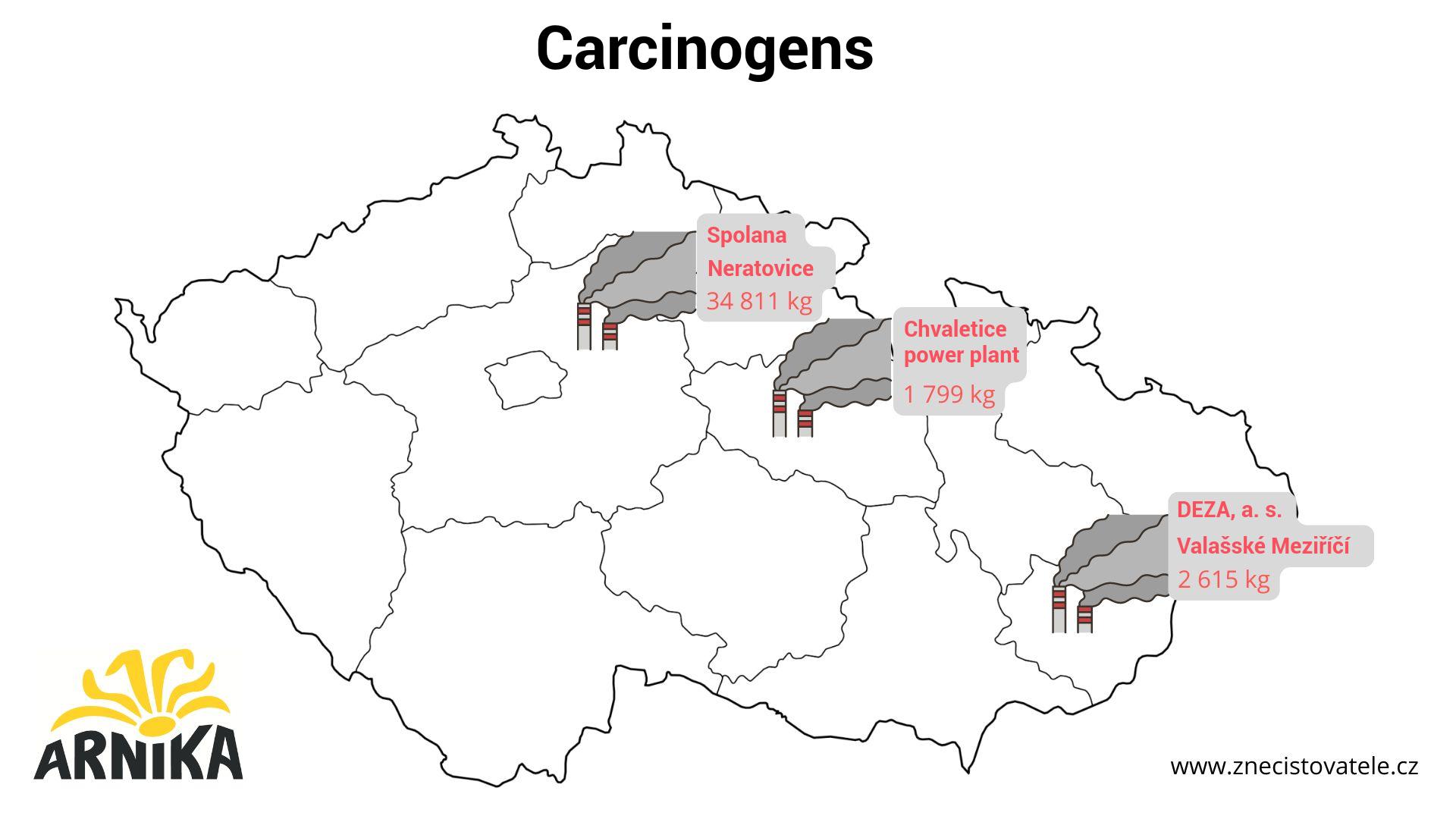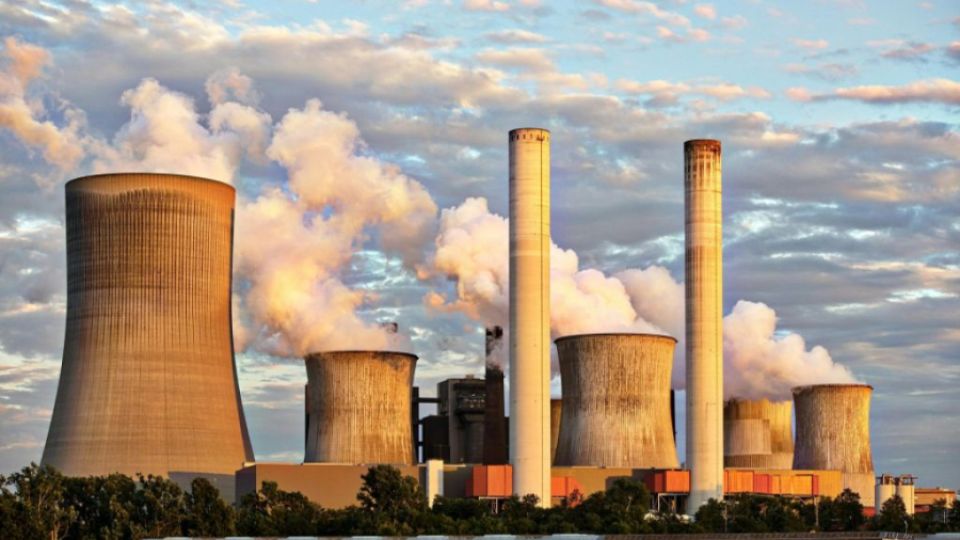The Czech pollutant release and transfer register, IRZ (Integrovaný registr znečištění, ‘Integrated pollution register’) has been a valuable source of data about the country’s pollution for years, providing unique information to the public, experts and journalists alike. One important function of the database is the ability to compare emissions of substances of concern over time. And, as far as the Czech environment is concerned, there are some good news: With a few exceptions, the amount of hazardous substances released in 2023 decreased in comparison to the previous year.
According to IRZ data, chemical and plastics plants were much more important contributors to pollution in 2023, but coal-fired power plants were still the biggest polluters in 2023. However, there are exceptions to the overall decrease in substances reported by industrial plants to the IRZ, such as emissions of potentially carcinogenic styrene, dioxins in waste and ozone-depleting substances. People can find out about pollution in their area by visiting www.znecistovatele.cz- an Arnika website that makes IRZ data more accessible to the public.
"We can be really happy about the decrease in reported emissions of toxic substances from industrial plants. However, it is important to remember that many toxic substances do not have to be reported by industry to the IRZ. In view of the data reported by chemical companies, the reduction of plastics becomes even more important, because the biggest polluters are mainly producers of raw materials for them, such as chemical plants in the towns of Litvínov or Kralupy nad Vltavou," sums up Jindřich Petrlík, head of the Toxic Substances and Waste Programme at Arnika.
The worst polluters in 2023 are mainly facilities in the Ústí nad Labem, Moravian-Silesian and Pardubice regions. Apart from the Spolana Neratovice chemical plant, the main polluters are the Počerady and Chvaletice lignite-fired power plants. The Liberty Ostrava smelter, which will reduce production in 2023, has dropped to the bottom of the rankings.
"Emissions of greenhouse gases and hazardous toxic substances decreased most significantly in coal-fired power plants. However, this is not due to any effort or goodwill on the part of their operators, but mainly because they were used less last year. Coal-fired power has been increasingly replaced in Europe's energy mix by renewable energy sources, which have boomed since Russia's invasion of Ukraine. This shows in practice what we have been saying for a long time: if the Czech Republic reduces the production and export of its dirty coal-fired electricity, it will have a positive effect on the climate and air quality. Emissions can go down even further, because even last year the Czech Republic was still a big exporter of electricity," said Lukáš Hrábek, spokesman for Greenpeace ČR.
"Reducing coal burning improves the environment. But the Počerady and Chvaletice lignite-fired power plants, owned by businessman Pavel Tykač, are still the biggest polluters of toxic mercury because they have extensive exemptions from the emission limit. An illustrative comparison is the Tušimice power plant, which in 2020 emitted the same amount of mercury as Počerady, but now emits a fifth less thanks to compliance with the limits. Politicians should refuse to subsidise coal-fired power stations whose electricity we can do without, according to energy models. It makes no sense for citizens to pay someone who pollutes their environment," adds Jiří Koželouh, head of the energy programme of the DUHA environmenal movement.
The law requires facilities to report spills and transfers of certain hazardous substances themselves. For the reporting year 2023, a total of 1218 facilities provided data.
The Integrated Pollution Register IRZ itself is celebrating 20 years of its existence this year. To mark this anniversary, Arnika has published a (Czech) brochure summarising the history of this essential tool for collecting and making available information on emissions and transfers of pollutants into the environment. It also highlights the real impact of the IRZ on the behaviour of companies, which, thanks to the regular publication of information on pollutant emissions, have long sought to improve their technologies and reduce their impact on the environment and the health of people not only in the vicinity of their companies.
Over the past year, Arnika has also stepped up its activities on the implementation of pollution registers in other countries and outside Europe, which it has supported by publishing a global guide for the civil sector "Pollutant Release and Transfer Register and Civil Society" and by organising a conference in Indonesia in early June 2024 together with the local organisation Nexus3. At the end of November, an Arnika representative was invited by the Aarhus Convention Secretariat to speak at its PRTR Protocol Roundtable in Geneva and present a global study on registries and civil society.
More information on selected substances of high toxicity
Mercury
Eight of the top ten sources of mercury emissions to air are coal-fired power and heating plants (ranked 1-8). The Počerady power plant is in first place, followed by the Chvaletice power plant and the Prunéřov and Ledvice power plants. The Chvaletice plant significantly reduced its annual mercury emissions by about 200 kg/year, but this was due to lower electricity production and not to compliance with the limit values. Compared to the previous year, the total mercury emissions reported to the IRZ decreased by more than 600 kg.
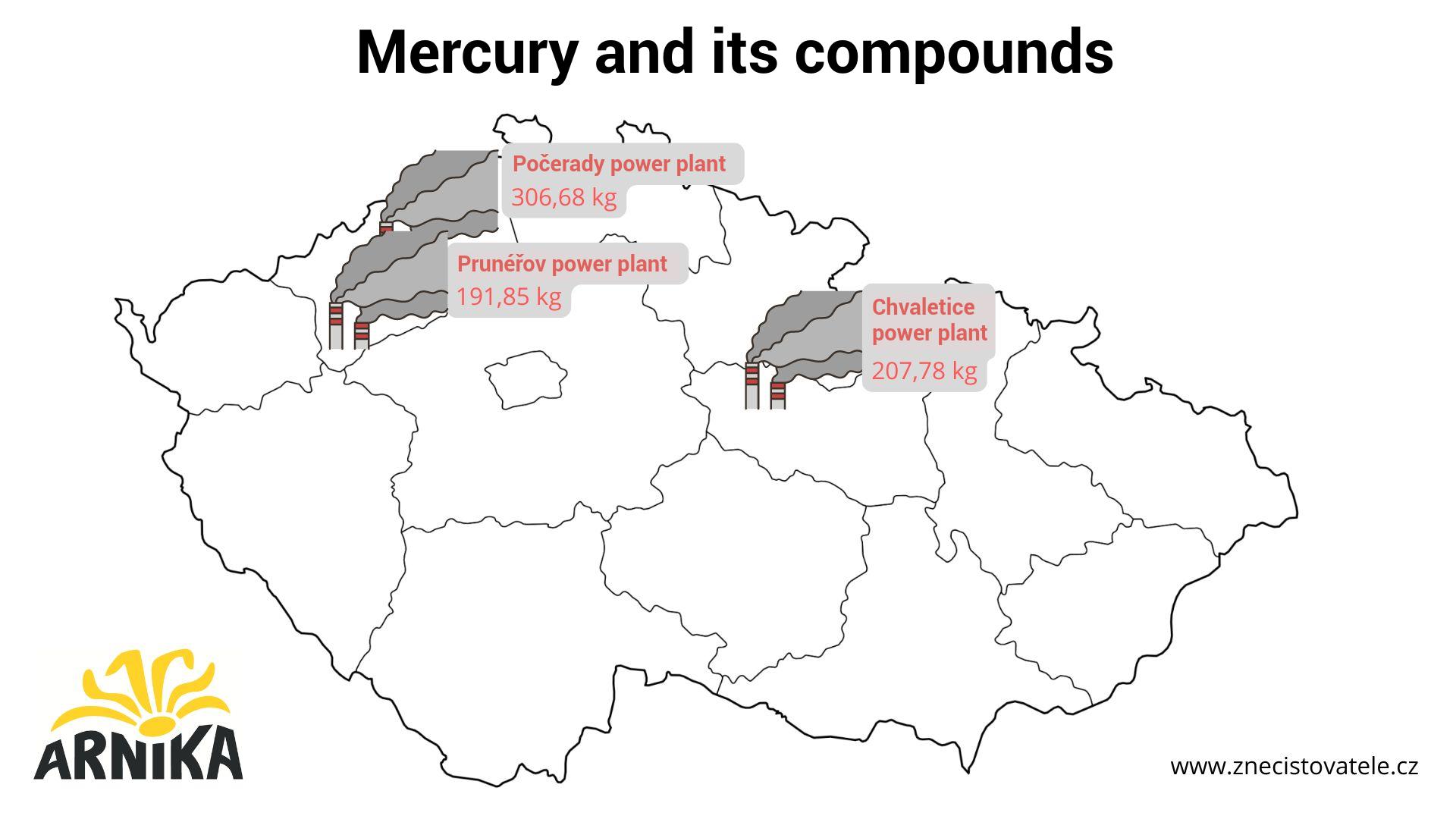
Dioxins
The total amount of dioxins reported to the IRZ increased from 107 to 111 grams TEQ/year, mainly due to the increase in the Přerov heating plant and some waste incinerators, namely the municipal waste incinerators in Prague - Malešice and Brno. Třinecké železárny also increased the amount of dioxins in waste compared to the previous year. They remained in first place in the ranking. One of the dangerous practices of waste incineration plants is the attempt to recycle waste containing dioxins into various building materials. This issue is also the subject of a new global study, "Waste Incineration and the Environment", to be published by Arnika in September 2024.
Styrene
Styrene emissions reported to the IRZ increased by more than 5 tonnes/year to almost 103 tonnes. However, this is a decrease of 50 tonnes/year compared to 2015. Two companies contributed most to the increase in styrene emissions, namely Synthos Kralupy a.s. and the musical instrument manufacturer C. Bechstein Europe in Hradec Králové. Both of these plants have essentially doubled their annual styrene emissions compared to the previous year. However, there are also plants that have reduced their styrene emissions compared to the previous year. These include ACO Industries Tábor s.r.o.
Formaldehyde
While styrene emissions increased in 2023, formaldehyde emissions fell significantly to an all-time low, contributing to a significant reduction in carcinogenic emissions. For example, Rockwool Ostrava reduced its emissions by more than 4.5 tonnes/year and Lukavec Wood Processing Cooperative by even more, almost 5 tonnes/year. However, Saint-Gobain Adfors CZ s.r.o. in Litomyšl achieved the greatest reduction (more than 7 tonnes). In total, around 8.5 tonnes of formaldehyde emissions were reported to the IRZ for 2023, which is approximately the amount of emissions from a single operation in the previous year. This was the aforementioned Saint-Gobain Adfors CZ s.r.o. in Litomyšl.
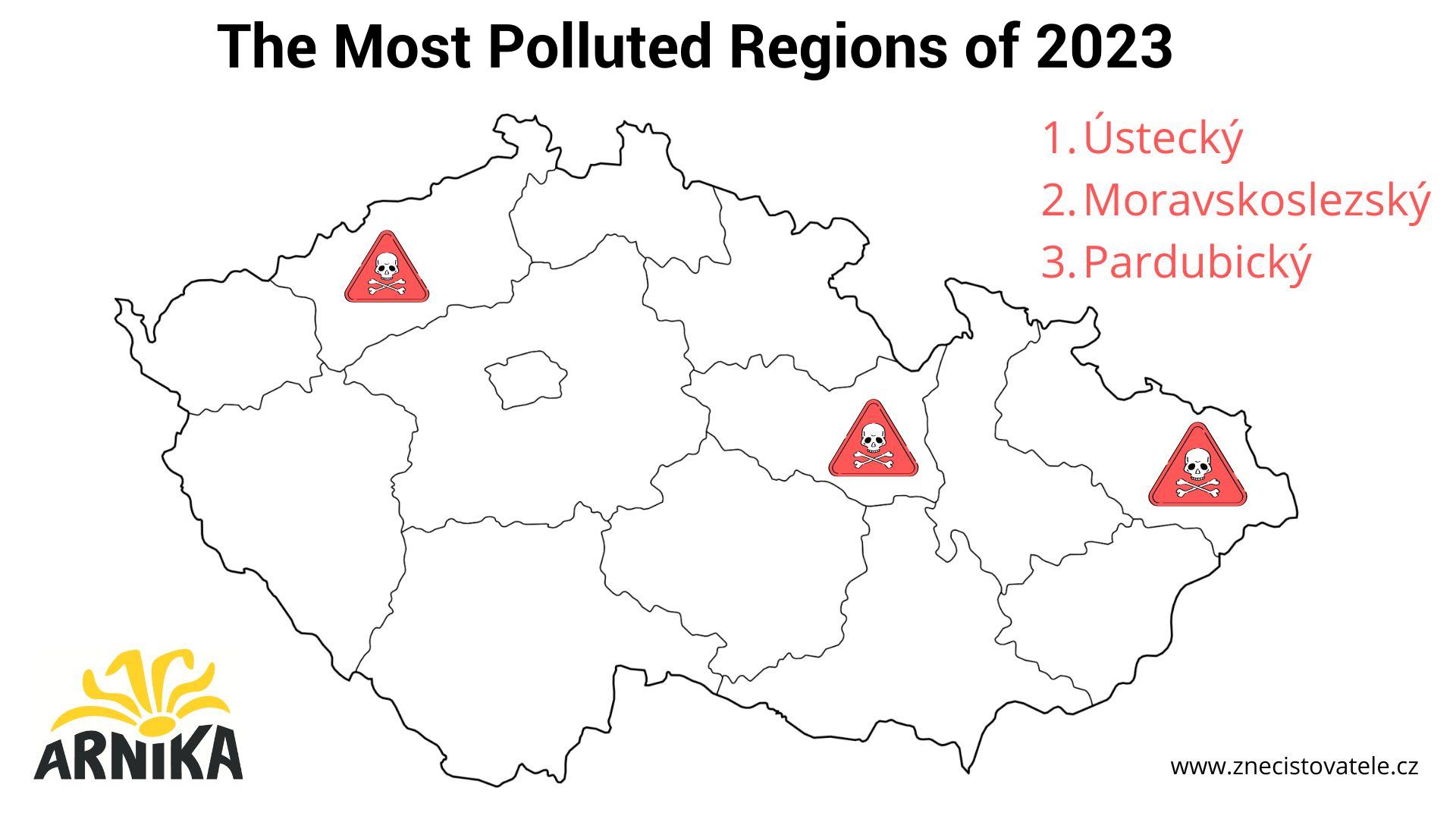
Emissions of air pollutants
Greenhouse gases
In 2023, our industrial operations reported lower greenhouse gas emissions than in 2020, the period of the Covid 19 pandemic. Of the top ten GHG sources, only the Tušimice power plant increased its emissions compared to the previous year. Other power plants reported significant decreases. In addition to power plants, the top ten also includes Unipetrol, a chemical company belonging to the Orlen Group, Třinecké železárny and the Mondi Štětí paper mill. The smelter Liberty Ostrava a.s. was removed from the list.
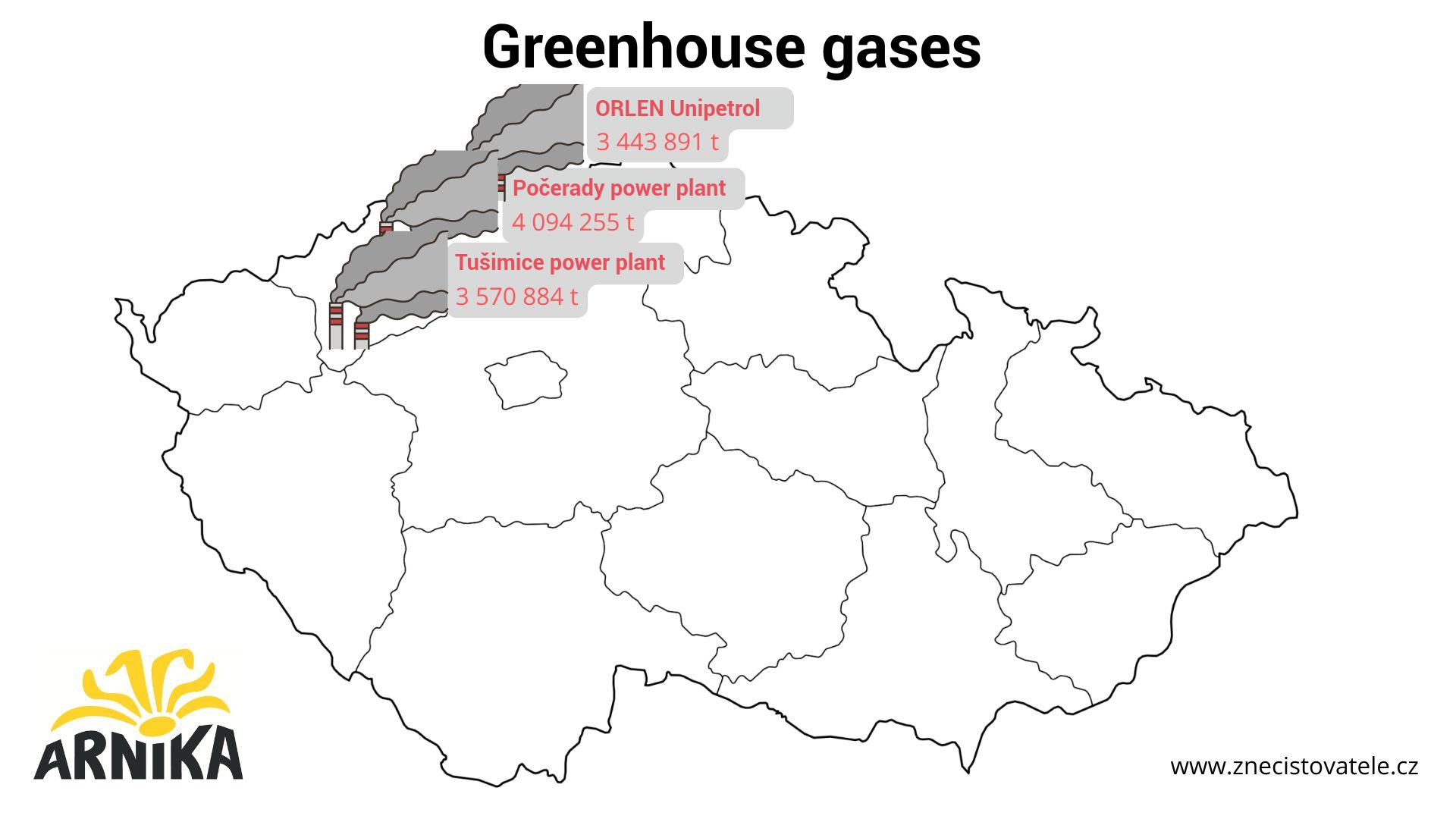
Dust emissions
Dust emissions in the Czech Republic are steadily decreasing. In 2023 they were lower by almost 300 tonnes per year. For the first time in a long time, the Liberty Ostrava a. s. power plant was displaced from first place in this category by the Počerady power plant, despite the fact that it has reduced its emissions year on year. Dust emissions from Liberty Ostrava a.s. fell by more than half compared to the previous year, i.e. by more than 170 tonnes/year. The overall decrease in dust emissions from conventional large sources has made the basalt quarry at Měrunice in the Bohemian Central Uplands the eighth largest dust source in the Czech Republic, with 15 tonnes of fugitive dust, a good second only to the nearby Ledvice power plant, which emitted over 73 tonnes of dust per year, some 16 tonnes less than in the previous year.
Carcinogens
Spolana Neratovice, which holds the infamous first place in this ranking, has reduced its vinyl chloride emissions by almost 4 tonnes/year. The Saint-Gobain Adfors CZ s.r.o. plant in Litomyšl dropped from second to eighth place in this ranking by dramatically reducing formaldehyde emissions by more than seven tonnes/year. The Chvaletice power plant reduced its emissions of arsenic by almost four tonnes compared to the previous year.
